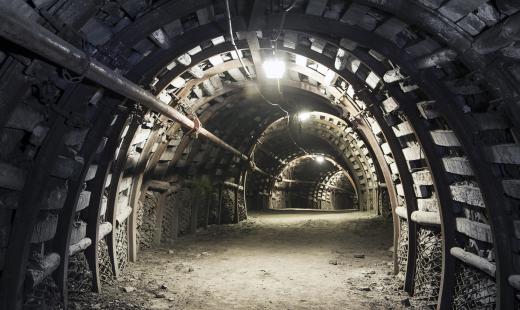A safety lamp is a lamp which has been designed for safe use in areas where flammable gases and particles are present. This device was originally developed for use in mines, although it can be used in other environments as well. The earliest safety lamps utilized flames, while modern lamps are usually electric. Numerous examples of antique safety lamps can be seen on display in museums, including versions designed by early pioneers in this field, such as Sir Humphry Davy.
Mining has always been dangerous work with a number of challenges, one of the foremost of which is providing adequate lighting. Dim conditions in mines can lead to eye problems for miners, in addition to making it hard to work, and early mines used a variety of tools for lighting. Most of these tools involved open flames of some kind, or partially shielded flames, which posed a serious safety risk in a mine, because releases of flammable gases around an open flame can cause an explosion. Hence, the need for a safety lamp.

The safety lamp is designed not to spark an explosion when flammable materials are present. The heat of the lamp is carefully distributed and the flame itself is shielded so that temperatures cannot rise high enough for gases and particles of materials like coal to ignite. In the case of a lamp which does not rely on an open flame, such as an electrical lamp, the electric components are shielded to prevent sparks, and the heat of the lamp is dissipated so that it does not grow dangerously hot. Historically, safety lamps were hung along the halls of the mine; today, most mines are electrified with their own safety lighting systems, and miners wear safety lamps on their helmets.
A safety lamp with a flame, however, does not just provide a source of illumination. It also acts as a form of alarm, because the nature of the flame changes as the composition of gases in the surrounding air changes. A lack of oxygen would cause the flame to sputter out, sending a signal to miners to get out before they suffocate. Flammable gases can cause the flame to grow or change colors, indicating that a dangerous situation has emerged and the mine should be evacuated until the gases can be safely vented.
Today, miners rely on arrays of sensors to alert them when the mixture of gases underground is becoming dangerous, rather than on a safety lamp. These sensors sound auditory alarms in addition to generating a visual alarm, making it easy for miners to respond. The safety lamps worn by miners are utilized as a source of illumination alone, with shielded electrical components which ensure that a spark will not emerge to ignite gases in the mine.
Ever since she began contributing to the site several years ago, Mary has embraced the exciting challenge of being a About Mechanics researcher and writer. Mary has a liberal arts degree from Goddard College and spends her free time reading, cooking, and exploring the great outdoors.

